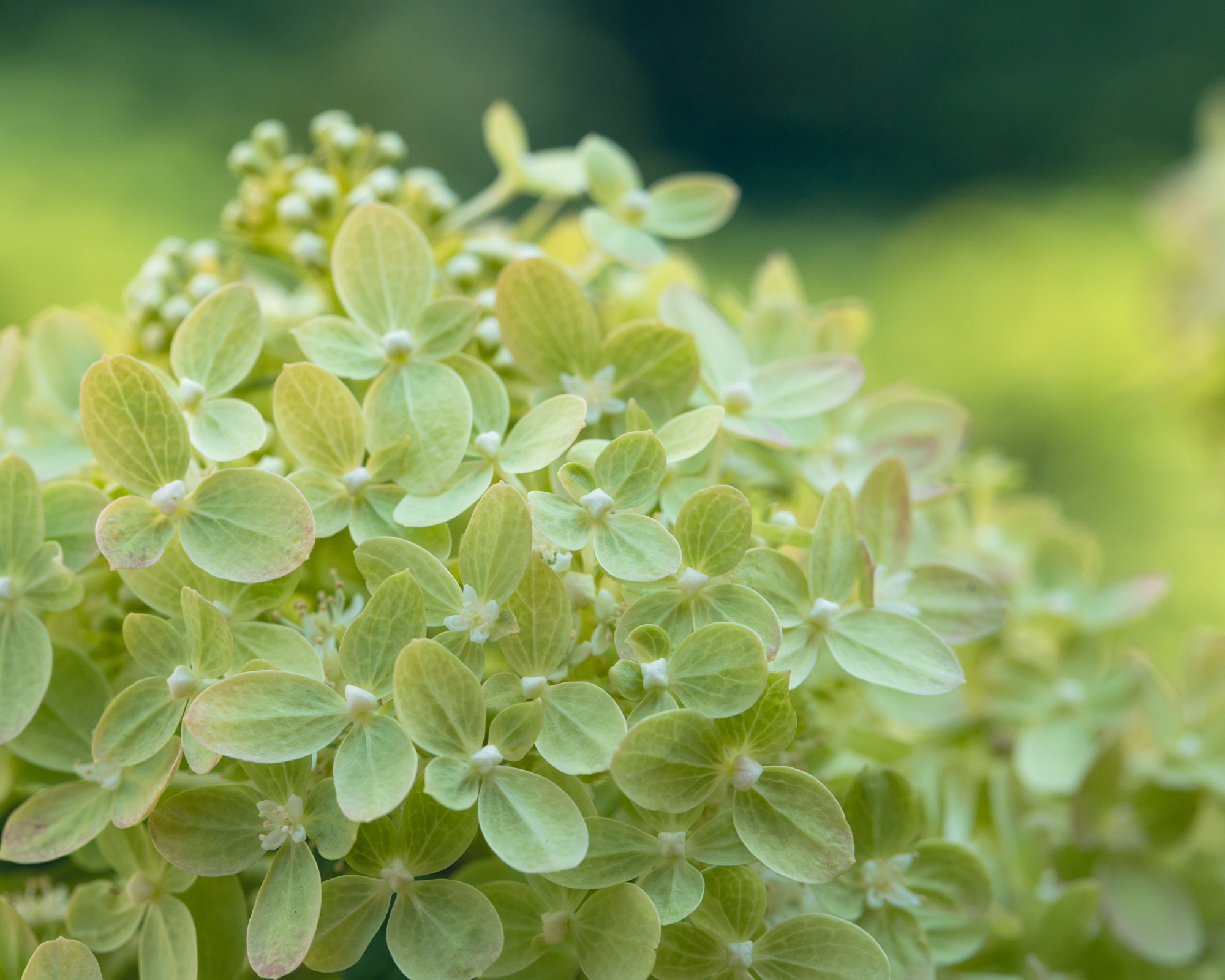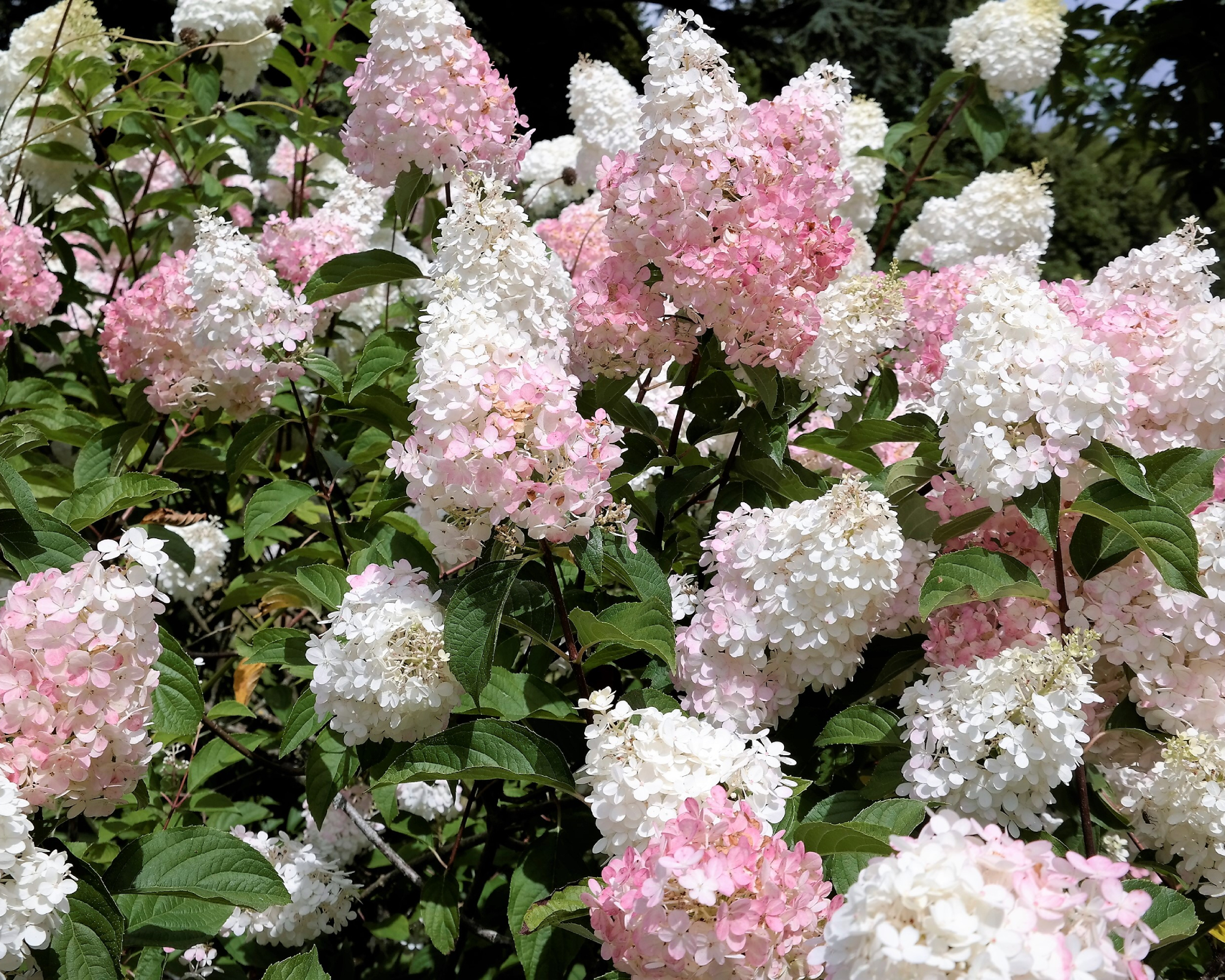Pruning Limelight Hydrangea Bushes For Bigger Blooms & Stronger Plants
Pruning 'Limelight' hydrangea will benefit the shrub. Flowers will be more bountiful the next year and branches will be stronger. Learn how and when to prune.


Amy Draiss
Limelight hydrangea, (Hydrangea paniculata ‘Limelight’) is a very popular panicle hydrangea cultivar. Its name gives you a hint at its beautiful flower color: the blossoms emerge lime-green, mature to white, then finish up as deep pink.
Is ‘Limelight’ hydrangea pruning necessary? Panicle hydrangea are vigorous shrubs producing dense flowers, and most benefit from pruning. ‘Limelight’ is one of them. In fact, the cultivar produces bigger flowers on stronger branches if pruned back in winter. In order to complete this garden job well, you have to know how and when to prune ‘Limelight’ hydrangea.

Do You Need To Prune ‘Limelight’ Hydrangeas?
There are many reasons to prune hydrangeas. Pruning can help to create a strong branch structure and prevent broken branches in wind or storms. Trimming also allows air and sunlight to pass into the center of the plant, preventing fungal issues.
When it comes to pruning ‘Limelight’ hydrangeas, there are even more benefits. The plant is robust and produces a dense crop of large blossoms. But you’ll get even bigger, more glorious blooms if you prune the shrub regularly.
Benefits Of Pruning ‘Limelight’ Hydrangeas
Trimming back ‘Limelight’ hydrangea bushes makes the plant more vigorous and more beautiful in a variety of ways. First, pruning the branches of this shrub creates a strong branch structure with solid structural branches that will withstand winter storms. Broken branches are not only damaging to the appearance of the plant, they can also open wounds in the bark that allow disease and insect pests to enter.
Another benefit of pruning a hydrangea bush is to limit the size of the shrub. Some of these plants can grow fast to 24 feet (8m) or more. While ‘Limelight’ won’t grow that tall, its maximum height of 12 feet (4m) may be too big for some gardens. Trimming it can keep it down to the height that works best for your garden site.
In addition, hydrangea shrubs don’t always grow with even branching that makes the shrub as aesthetically appealing as possible. Pruning can sculpt a hydrangea into an attractive bush. And, with ‘Limelight’, it can also usher in bigger blossoms.
Sign up for the Gardening Know How newsletter today and receive a free copy of our e-book "How to Grow Delicious Tomatoes".

High quality pruning shear perfect for cutting stems and small branches on your hydrangea bushes and other shrubs. Find in the Gardening Know How Shop.
When To Prune ‘Limelight’ Hydrangeas

When it comes to pruning hydrangea plants, optimal timing varies from one species to another. Some species, like the popular mophead hydrangeas (Hydrangea macrophylla), produce buds on old wood. That means that the buds form at the end of the flowering season. To avoid reducing the number of blooms the following year, you need to prune early, just as the current season’s flowers fade.
‘Limelight’ – and other panicle hydrangea varieties – form flower buds on new growth in spring. This means that you have more time to prune. You can trim back ‘Limelight’ at any point between flower fade in summer’s end and bud break in springtime.
However, there is a preferred time in this wide range. Most gardeners agree that the ideal time to prune back ‘Limelight’ is at the border period between winter and spring. That’s because the flower heads hang on the shrub all winter long, offering visual interest in an otherwise bare garden.
How To Prune ‘Limelight’ Hydrangeas
Pruning ‘Limelight’ hydrangea is not difficult. You’ll want to reduce the stems using heading cuts. That means you need to select the stems you want to trim. Find a healthy bud on each stem, then cut the stem just above the bud. Repeat as many times as necessary to shape the bush as you want. You can do this at any time from fall to spring.
Many gardeners prefer to do hard pruning, or rejuvenation pruning, in late winter, trimming all stems back to between 1 foot and 1.5 feet (.3 - .5m). This results in new, vigorous stems with larger than normal blossoms. Alternatively, prune the back lightly to 3 – 6 feet (1-2m) tall. This produces shorter new growth topped by terminal flowers.
Frequently Asked Questions
How do you make ‘Limelight’ hydrangeas bushier?
Is your ‘Limelight’ shrub getting older and looking sparse? You can use rejuvenation pruning to make it shorter and more bushy. This will take three growing seasons. Prune off a third of the oldest stems to the ground the first spring, another third the following spring, and the remaining third the next.
Do ‘Limelight’ hydrangeas bloom on old wood or new wood?
‘Limelight’ hydrangea bloom on new wood, that is, on the new shoots that are produced in spring. That’s why you have greater latitude in terms of pruning time.
This article features products available from third party vendors on the Gardening Know How Shop. Keep in mind that our plant inventory is limited - so if you’re thinking of purchasing, don’t wait!

Teo Spengler is a master gardener and a docent at the San Francisco Botanical Garden, where she hosts public tours. She has studied horticulture and written about nature, trees, plants, and gardening for more than two decades. Her extended family includes some 30 houseplants and hundreds of outdoor plants, including 250 trees, which are her main passion. Spengler currently splits her life between San Francisco and the French Basque Country, though she was raised in Alaska, giving her experience of gardening in a range of climates.
- Amy DraissDigital Community Manager